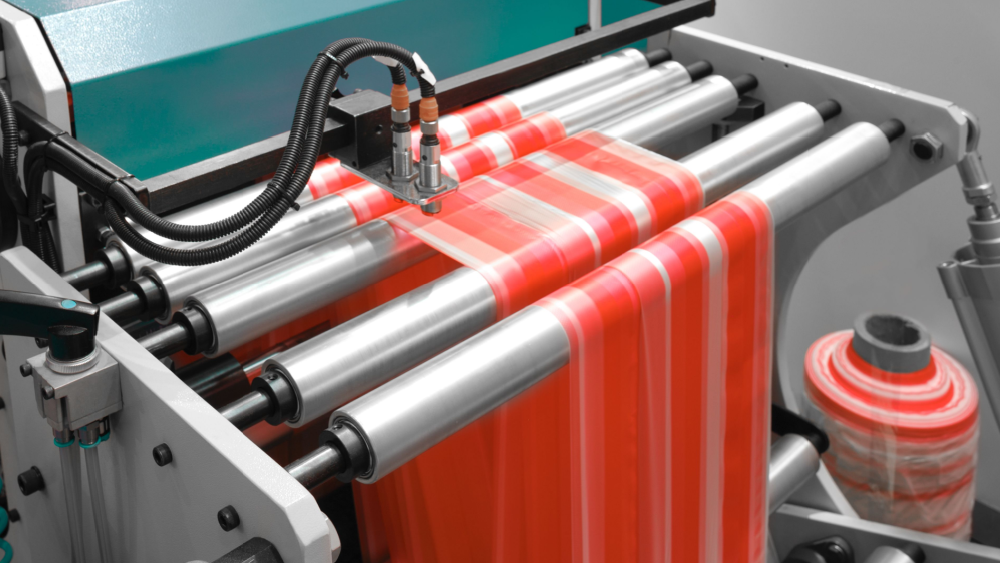The concept behind the term Industry 4.0 has gained momentum over the past few years and is now making its entry into the printing industry. Yet, conventional presses and ancillary machines in most commercial printing facilities are not fully compatible with IIoT. The industry must undergo a full digital transformation to integrate IIoT with existing equipment and to explore new, more efficient ways of printing labels.
IIoT (Industrial Internet of Things) is not just about smart wearables and smart voice control-enabled devices at home. Many industrial businesses have adapted the technology to improve efficiency and increase value. In the industrial world, IIoT gathers data from digital devices that can be processed in a cloud. It further enables these devices to interact with each other based on that data.
When combined with a powerful BI platform or even with a smart ERP system, IIoT can significantly improve efficiency in all areas.
The printing industry needs to adapt and evolve
If you search for IIoT within the printing industry, you might not find much information. Although the application of Industry 4.0 and IIoT is quite common and only increasing in most industries, it is progressing slower in the printing industry. Several challenges need to be resolved to gain progress faster:
- Technical feasibility of integrating IIoT in older conventional presses
- Unavoidable operator interventions during the printing process, limiting the level of automation
- Advanced application of predictive maintenance with IIoT in printing presses has a limited scope
- Quality check for consumables has a limited scope, and the initial investment is high
IIoT in printing automates operations and improves data quality
In today’s printing world, being cost-effective is critical for success. Conventional printing press shops work upon similar operational metrics, depending on factors such as:
- Job run length
- Job change time
- Number of changeovers
- Breakdowns
- Small stops for adjustments
- Roll change time
These are all key metrics that can affect machine uptime. Monitoring them can help optimize processes in order to improve efficiency and become more cost-effective.
Read more: 5 things to consider before designing your new labels
Using data to simplify in-house processes
Printing presses need to work at optimal efficiency, using resources well, with minimal wastage. Good printing presses last well beyond ten years, meaning that most established printers have a mix of older and modern presses. However, not all modern press processes are fully automated and still require manual intervention.
Data collection using IIoT devices combined with MMI (man-machine interface) will be very useful when integrated with an ERP or BI platform. Some key game-changing functions of IIoT include using data for:
- Monitoring and controlling quality levels.
- Monitoring machine condition, including predictive maintenance.
- OEE (Overall Equipment Effectiveness) and downtime analysis.
- Establishing end-to-end traceability.
- Real-time feedback to the planner and the customer.
These are also time-saving measures. Because the margins within the industry today are minimal, there is really no time for errors. At Skanem India, we know how critical timely deliveries are. Systems like IIoT can prevent adverse events from occurring in the supply chain and increase reliability.
Read more: Labels: Providing Wings of Hope for start-ups with digital printing
Minimizing machine downtime
IIoT can monitor the machine's condition, including:
- Vibrations on a gear/pulley
- Temperature of a bearing
- The impact of a cutting operation.
The change from normal range provides crucial information, making it easier to prepare for any maintenance activity and avoid a breakdown. IIoT will also help track downtime accurately, and this data can be used for OEE analysis to identify issues that need to be addressed.
Industries with zero tolerance for breakdowns will benefit most from IIoT. Hospitals are a great example, as they rely on stability in their systems at all times and need to know the probability of failure. However, any business where it is critical to prevent downtime will benefit from this type of solution.
Read more: 3 ways to enhance productivity with an automated labelling machine
Reducing human errors
On a conventional press, the downtime information is manually punched in, often by multiple operators. Hence, the outcome of an OEE analysis may not always be fully reliable. If you are not addressing the right issues, the results will not be visible.
IIoT can transform the press by providing accurate and dependable information required to identify hidden issues. Operation managers can then focus on improving those areas. Following the PDCA cycle (Plan-Do-Check-Act) for every action will ensure proper implementation and control measures will ensure sustenance.
There are other areas where IIoT can help reduce human errors through automation:
- An already approved digital artwork file can be used as a reference for print inspections in real time.
- Approved shade cards can be compared against printed outputs in real-time and generate a variance report.
- Establishing traceability throughout the material flow and preventing material mix-ups.
Read more: Packaging and labelling: Avoiding the blame game after product launch
Skanem India is continuously working towards digitalizing the printing industry. With innovative solutions like IIoT, operations can improve significantly. Feel free to contact us about how your business can implement IIoT with your existing ERP or BI system.







